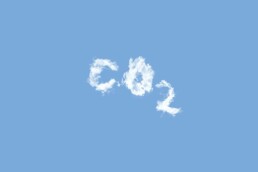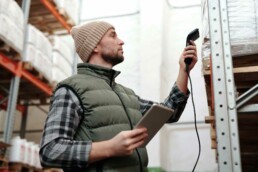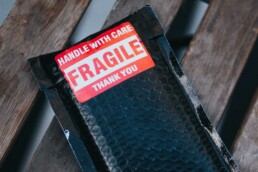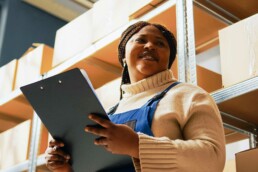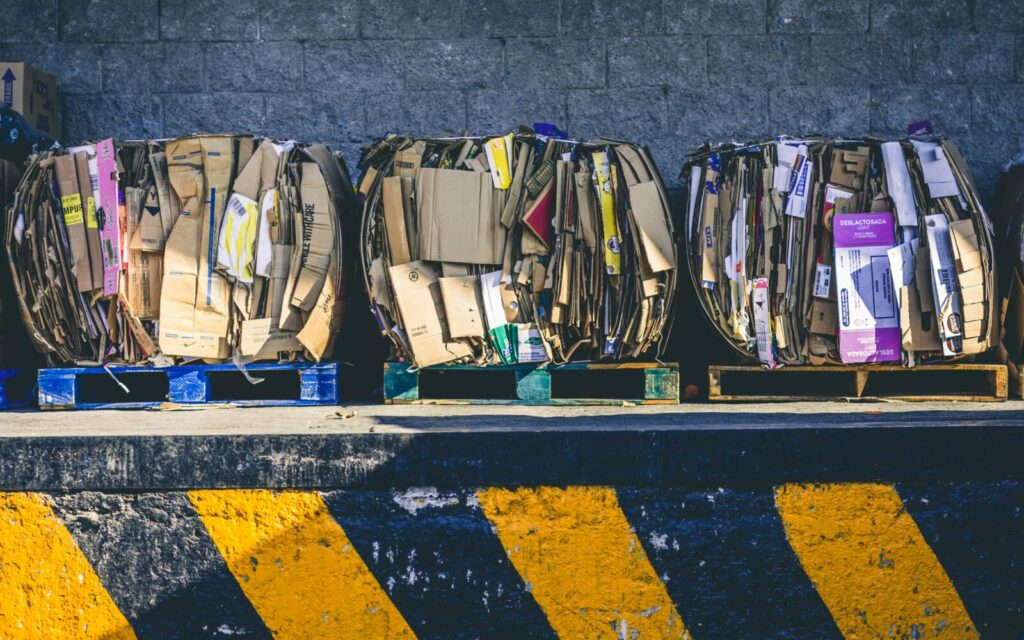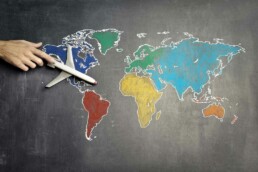Eco-friendly Packaging: Best Practices for Ecommerce Brands
Eco Expectations
Today, we see a growing rise in the popularity of eco-friendly packaging and eco-friendly fulfillment practices thanks to the growth of waste awareness. Pollution has become a significant problem with the rise of fast convenience and online shopping. That’s why it’s important to consider how your company is contributing to the growing need for eco-friendly practices. Today, we’ll talk about how your company can satisfy your customers’ increasing desire to reduce carbon footprints through the use of eco-friendly packaging.
“In 2021, 84% of consumers expected their products to be easily recyclable and produced with recycled material”
According to The Recycling Partnership and SWNS
Why You Should Switch to Eco-friendly Packaging
Aside from meeting the rising demands of your consumers, the planet needs as much help as it can get. When it comes to lowering your carbon footprint, it’s important for companies to enable and encourage their consumers to do the same. By transitioning to an eco-friendly packaging process, not only will you meet the growing demands of your buyers, but you will also make a considerable impact in protecting the environment.
Customer Standards
Firstly, let’s talk about how customer expectations are shifting.
Standards rise year after year as businesses around the world begin to offer eco-friendly packaging and simplified ways of helping the environment.
According to the 2020 Global Buying Green Report, 67% of consumers now consider themselves to be environmentally conscious.
59% said they are less likely to purchase a product that comes in unsustainable packaging.
That’s why it’s important to keep up with ever-growing standards and listen to the expectations of your buyers.
“Sustainability-marketed products grow 5.6x faster than conventionally marketed products.”
According to The NYU Stern School of Business
Better for the Earth
Secondly, eco-friendly packaging is better for the environment, and that’s just a fact. By using eco-friendly packaging materials such as paper, cardboard, bioplastic, and corrugated bubble wrap, you can offer a greener buying experience. You can also include instructions to reuse or dispose of eco-friendly packaging correctly. This will result in your brand’s carbon footprint being reduced, as well as each and every one of your customers’. Consider the potential impact that a single corporation could have by transitioning as few as 100 customers to a more eco-friendly fulfillment process. Multiply that by 10, 20, and so on. Each brand could have an enormous impact on the planet by one simple transition.
Better for Customers
By choosing eco-friendly packaging for your e-commerce brand you will decrease the amount of extra packaging delivered to your customers. By doing so, you will minimize waste on your clients’ side while also giving them the sense that they are contributing to something positive. You can also educate customers on how to reuse their packaging to eliminate waste and amplify the enjoyment of your brand.

Brand reputation
Implementing an eco-friendly packaging method will exceed your consumers’ expectations and, as a result, improve the image of your company. Eco-friendly companies come across as more appealing to customers, and the appeal is steadily growing. When you offer your consumers a low-waste, environmentally friendly buyer experience, they will reward you with better referral ratings and increased word-of-mouth exposure for your brand.
“Brands that move to sustainable and recyclable packaging gain access to a larger group of consumers who aren’t even considering their products today.”
According to the 2020 Global Buying Report
Save Space & Money
Conserving resources will help you save money and free up inventory storage space. All packaging should be kept to a bare minimum as part of an effort to reduce environmental impact. You can conserve space by downsizing packages and lowering the quantity of material you use. This will ultimately reduce the amount of storage space needed to maintain fulfillment supplies on hand. Additionally, as a benefit of decreased shipment weights, you may be able to save money on shipping expenses.
Government Incentives
Lastly, we’ll talk about the possible incentives you might have by going green. Today’s government recognizes the importance of environmentally friendly activities among consumers and companies. As a result, if you switch to a more eco-friendly packaging method, you may be rewarded with government incentives in an attempt to encourage companies that go green. Tax credits, subsidy advantages, and grants are examples of potential incentives.
How you can switch to Eco-friendly Packaging
When contemplating your transition to eco-friendly fulfillment, it may seem to be a daunting task at first. However, be assured that it’s simpler than you think.
- Start by switching to the eco-friendly alternatives of the materials you currently use.
- Reduce the size and space inside of your packaging.
- Find resources like ours for tips on making your consumers’ eco-friendly buying experience even more unique.
Transition to Recyclable & Biodegradable Materials
It’s important to take into consideration all of the resources you’ll need to execute a purchase transaction. Recognize that there are environment-friendly alternatives to each of the things you now use and that some may even be less expensive than current packaging. By contacting eco-friendly packaging wholesalers or your fulfillment provider, you can learn more about a variety of environmentally friendly packaging alternatives.
Transition to Recyclable & Biodegradable Materials
It’s important to take into consideration all of the resources you’ll need to execute a purchase transaction. Recognize that there are environment-friendly alternatives to each of the things you now use and that some may even be less expensive than current packaging. By contacting eco-friendly packaging wholesalers or your fulfillment provider, you can learn more about a variety of environmentally friendly packaging alternatives.
Decrease Package Size
Decrease the size of your packages to the absolute bare minimum. Ideally, you should choose the smallest box that will adequately hold your item in place. By eliminating unused space, you make it possible to utilize fewer resources, thus lowering possible waste.
Beginner’s Guide to Third-Party Logistics (3PL)
The world of e-commerce is always changing, therefore understanding the roll of Third-Party Logistics is integral to keeping up. In light of this our beginner’s guide to third-party logistics (3PL) will delve into the essential aspects, offering insights into fulfillment services, warehousing, and much more.
Read More…
Utilizing Falcon Fulfillment for Eco-friendly Packaging and More
It has never been simpler to make the switch to environmentally friendly order fulfillment. By partnering with Falcon Fulfillment, you gain access to environmentally friendly packaging materials that can be used to minimize your brand’s carbon impact.
Set aside the time spent contacting wholesalers, determining what supplies you need, and determining the most cost-effective solution – we’ll arrange it all for you.
Let’s Talk!
The Secret Tool of Successful E-commerce Brands: An Introduction to Third-Party Logistics and Its Influence on E-commerce
The Growth Rate of E-commerce
In today’s age of digital shopping and third-party logistics, e-commerce businesses are growing at an exponential rate. With this new technological surge of mass online purchases, it’s almost a bad idea not to get involved and take advantage of the new age of D2C transactions.
In this article, you’ll learn the number one secret to succeeding as an e-commerce brand in a saturating, cybernated environment.
First, it’s important to understand why e-commerce revenue has grown 30% over the last 10 years, and a whopping 43% in the single year of 2020. E-commerce has been around since the late 1960s and has evolved from small information exchanges to globally renowned brands like Amazon, eBay, Etsy, and many more. With the rise of these popular companies, small businesses have harnessed the benefits of e-commerce.
Today, it’s abnormal for a company, business, or brand to not have a website that allows you to purchase their items or services digitally.
“63% of consumers go online when buying locally. 46% say they don’t trust a business without a website.”
– According to the Local Search Association and a survey conducted by Weebly.
Timeline of E-commerce
As you can see in the condensed graph above, the e-commerce industry steadily grew in popularity after its initial introduction in the late 1960s; however, you’ll notice that between 1995 and 2020, e-commerce took the entire world by storm.
During the global takeover of COVID-19 and the (what felt like) endless days of quarantine, digital transactions produced over $82.5 billion dollars in a single year.
By contrast, e-commerce in 2019 produced only $360 million. This was a 77% increase in one year of e-commerce growth which was previously assumed to take a gradual 4 to 10 years.
This was an unexpected milestone for the e-commerce industry, and brands and businesses alike should assume that e-commerce will become the number one leading industry for retail sales.
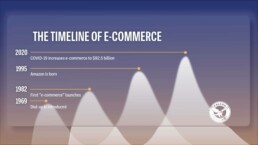
In 2020, e-commerce businesses were met with a demand never before seen. As the pandemic spread, seemingly overnight companies were forced to shift 100% online.
Those who did not have an online ordering infrastructure already in place had to scramble for solutions to stay in business.
After such sudden growth, it’s no surprise that order fulfillment demands skyrocketed for e-commerce companies. This begs the question, what was the constant factor that brought success to e-commerce businesses during this surge in online ordering?
Their secret was simple: they outsourced fulfillment to a third-party logistics partner. Let’s take a closer look at what goes into a seamless and lucrative order fulfillment process.
Fulfillment: Joys, Risks, and Fears
“The top factor in successful e-commerce brands is simple: fulfillment.”
The fulfillment process is meant to be the fun part.
You’ve got your finalized product, polished and ready to ship, neatly packed in custom branded packaging to give your buyer a tailored experience. This is the last step before completing the circle and creating a happy, returning customer.
For start-ups, small businesses, and other brands alike, it’s exciting to receive your first few orders and personally send them off.
You get the satisfaction of making sure each one is filled with love and its own personal pazazz. However, as your business grows, 5 orders soon turn to 100, 100 to 5,000.
A single person or a small team can only spread themselves so thin before the quality of the product that makes your brand unique is too saturated from the lack of care and personalization that each order requires. Throughout your business’s journey you will eventually encounter the non-negotiable processes of fulfillment.
The Solution
Now, it’s always an option to personally handle the picking, packing, and shipping in-house by yourself or by your designated staff. However, managing all 7 stages of the fulfillment process (receiving, inventory, storage, order picking, order packing, shipping, delivery, and returns), as well as maintaining quality and giving equal amounts of attention to the other aspects of your business may result in a subpar experience and product.
It’s important to partner your brand with a carefully selected team of professionals designated specifically for your fulfillment process.
By working alongside a reputable third-party logistic partner, you’re able to shift the extra stress of fulfillment (which is a separate job in and of its own) to experts trained in the art of transferring your product with quality in mind. From the manufacturer all the way to your customers, a 3PL has your back.
How Partnering with Third-Party Logistics Companies has Impacted the E-Commerce Industry
Since the 1980s (less than 40 years ago), the fulfillment operations for companies throughout the world have been extremely diverse. Over the years, industries emerged to give businesses an extra hand in reaching as many consumers as possible with the highest quality retained.
However, none of these industries have proven to be more successful than the introduction of third-party logistics.
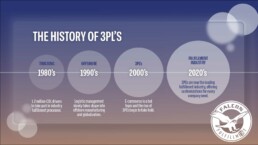
With the integration of e-commerce platforms, the opportunity arose to work with local and foreign 3PL providers that offered unique solutions to the ongoing challenges that companies face when connecting their products to consumers worldwide.
Once introduced, e-commerce fulfillment partnerships have simply improved, now offering designated fulfillment services integrated with leading and robust technology platforms to guarantee a streamlined experience for companies and consumers.
“As of 2013, 86% of domestic Fortune 500 companies use 3PLs for logistics and supply chain functions.”
– According to an Armstrong & Associates report.
Today, e-commerce brands all over the world are using reputable 3PLs to their advantage. Outsourcing e-commerce fulfillment is the industry secret that’s taking the globe by storm, from small businesses to Fortune 500 organizations. With the adoption of 3PLs into e-commerce, many brands experience improved volumes of operational efficiency and seller profitability.
Additionally, third-party logistic providers assist in reducing the overall cost of shipping and delivery time, better order accuracy, and ensure a positive consumer experience. Since its inception in the 1990s, 3PLs have taken the challenges of fulfillment and developed an industry of their own, guaranteeing business owners worldwide that their fulfillment procedures will be managed by experienced teams.
The Future of E-commerce and Third-Party Logistics Partnerships
E-commerce popularity has more than doubled since 2019 and is expected to grow further in 2022. Online shopping demand increases the need for fast shipping, sustainable packaging, and personalized orders. This trend requires quality fulfillment services for e-commerce brands globally. Without expert backend fulfillment, brand growth remains limited by your personal capabilities. Partnering with a third-party logistics provider gives your brand freedom to expand. This collaboration allows you to focus on creating, defining, and controlling your business aspects.
The Benefits of Using a 3PL for Your Business
Healthy Profit Margins
By aligning your business with the right third-party logistics fulfillment partnership, you gain the benefit of alleviating the stress of unhealthy profit margins. This decision can save you money on product transportation, warehousing, staffing, shipping, and inventory.
When you partner with an e-commerce fulfillment provider, your cost margin will be considerably lowered, allowing you to realize savings inflation and the financial freedom to reinvest in your company through marketing and product development.
Time Management and Prioritization
Delegating work to a specialized fulfillment team frees up your time for important tasks. Many business owners struggle with operational aspects of their company. Your expertise lies in brand management, not warehouse operations and order packing. 3PLs like Falcon Fulfillment handle fulfillment so you can focus on your business’s front end. This arrangement allows you to concentrate on core business activities without worrying about order processing.
Inventory Freedom
Above all else, inventory is the biggest benefit you’ll receive when working with a reputable 3PL. Shipping, packaging, and returns are straightforward. Limited inventory space can hinder your profit growth potential. Working with a 3PL eliminates inventory concerns, as they manage storage for you. A reputable 3PL partner enables easy brand growth and sales increases. They scale their services alongside your business, supporting your expansion.
Customization and Quality Assurance
Working with a third-party logistics provider ensures quick fulfillment and backend satisfaction. To have the best scalable possibilities for your company, find one that provides customization options to tailor your fulfillment process.
Collaborate with your 3PL partner to incorporate branded shipment packaging, custom promotional inserts, flexible shipping options, and even environmentally friendly packaging.
There’s a 3PL for everything, and one designed particularly for you and your business.
Beginner’s Guide to Third-Party Logistics (3PL)
The world of e-commerce is always changing, therefore understanding the roll of Third-Party Logistics is integral to keeping up. In light of this our beginner’s guide to third-party logistics (3PL) will delve into the essential aspects, offering insights into fulfillment services, warehousing, and much more.
Read More…
Harness the Power of a 3PL Partner
You will, without a doubt, come face to face with fulfillment sooner rather than later in your business journey. Although it can be a tough process to tackle, it is critical to understand your options as an expanding business. 3PLs and e-commerce have permanently altered the way individuals do business. The combination of e-commerce with a modern third-party logistics provider enables you to future-proof your business. Be ready for whatever the next technological wave of brand success and consumer demands bring.
To learn more about how Falcon Fulfillment can help you scale your business with better fulfillment, click the button below.
Let’s Talk!
How a 3PL Partner Helps Create a Sustainable Business
How Does a 3PL Partner Create a Sustainable Business?
Sustainability has been a growing concern for many consumers and companies alike. Fortunately, the 3PL industry has been paving the road toward sustainability in an easily obtainable way. In this article, we’ll be outlining how a 3PL partner can create a more sustainable business for your e-commerce and save you money in the long run.
Reduce Transportation Emissions
Transportation contributes significantly to growing greenhouse gas emissions. A 3PL partner can provide strategic transportation solutions for e-commerce. 3PL partners help eliminate unnecessary transportation stages. They have the ability to convert transport from air freight to sea freight—by shifting inventory to more optimized locations and using the most efficient co-loading routes. Furthermore, working with a 3PL boosts the fill rate per transport unit per tank of gasoline. This allows you to use higher capacity trucks and offset routine vehicle maintenance that would otherwise fall on your shoulders.
Transition to Sustainable Packaging
While cost-effectiveness and safe delivery have traditionally taken precedence over sustainability, many e-commerce businesses are rapidly resorting to eco-friendly packaging to reduce their environmental impact and fulfill rising customer expectations. A 3PL partner can help e-commerce by sourcing packaging materials that are optimized, greener, recyclable, and responsibly sourced. With the expansion of e-commerce shipping, it’s critical to work with a 3PL that adheres to environmental standards, assists in lowering packing and disposal costs, and helps your e-commerce meet and hold the same standards as your shoppers.
Optimize Energy Usage
When operating a warehouse, significant amounts of energy are used. Lighting, extensive warehousing equipment, IT infrastructure, temperature regulation, and other elements are included. All of these factors lead to high energy usage, operating costs, and an expanding carbon footprint. The right 3PL partner will aid e-commerce companies in reducing their environmental impact via optimized warehousing. This includes; energy-efficient floor designs, solar panels, sustainable packaging alternatives, responsible waste removal, and much more.
Aid in Reverse Logistics
All procedures involving the reuse of products and materials are referred to as reverse logistics. This includes recycling, refurbishing, and reselling returned items. In reverse logistics, the product is transferred from the buyer to the manufacturer before being disposed of or repurposed. Working with a 3PL can help your company practice reverse logistics effectively and significantly minimize the carbon footprint produced by returns and discarded items.
Beginner’s Guide to Third-Party Logistics (3PL)
The world of e-commerce is always changing, therefore understanding the roll of Third-Party Logistics is integral to keeping up. In light of this our beginner’s guide to third-party logistics (3PL) will delve into the essential aspects, offering insights into fulfillment services, warehousing, and much more.
Read More…
Keeping up with the continuously evolving e-commerce industry is challenging, especially with the increasing pressure to become more and more sustainable. When you partner with a 3PL, things get easier. Knowing you have a reliable partner to help your e-commerce reduce overall transportation emissions, adopt sustainable packaging, optimize energy usage, and aid in reverse logistics is a stress relief that every business owner needs.
Get in touch with Falcon today to discuss how we can help your sustainability.
Let’s Talk!
Free Shipping: Why You Should Offer It + 10 Free Shipping Ideas
Why You Should Offer Free Shipping
Unexpected shipping costs are the top reason for cart abandonment among shoppers. Cart abandonment cannot be eliminated completely. But eliminating unexpected shipping costs can help.
To help you increase your sales, we are going to break down ten innovative methods by which your e-commerce business can offer free shipping to its consumers. We’ll go through how you can provide it, how it will affect your business, and whether or not a free shipping option is right for you.
1. Free Shipping on Everything
The simplest method to provide it is to include it with all of the products and purchases. Building shipping costs into your product costs can help you avoid surprise shipping charges and cart abandonment and increase sales.
Buyers will certainly notice this irresistible offer, and it’s a wonderful way to attract their attention. However, if your products vary significantly in size and price, this method may wind up costing you more money than you originally planned.
This technique is suited for e-commerce companies that sell small products on a regular basis within a specified price range. Offering free shipping will be more cost accurate instead of a fluctuation.
You may also provide it on all orders by simply raising the overall price of your items and including shipping in the final cost at checkout. By doing this, you’re creating the impression of “free delivery” without absorbing the shipping cost yourself.
This method also works best for small and similarly priced items.
If free shipping isn’t a sustainable method for your company consider offering occasional free shipping promotions.
2. Minimum Thresholds
This is a very popular option that we see everywhere. By using a minimum order threshold, you encourage your customers to spend more in order to reach the goal of free shipping.
Ex.: Free shipping on all orders over $75
Once a customer reaches a certain amount in their cart, simply queuing an automatic notification that they’re X amount away from free shipping, is almost a guaranteed way to increase your average order value.
3. Certain Times of the Year
Providing free shipping during certain periods of the year is a sensible and strategic move, much like offering discounts during peak season. Providing free shipping (and even bundling it with a minimum threshold or a bundle deal) for a particular period of time may significantly increase your company’s sales.
If, on the other hand, you’re aware that you have slower selling months, you might consider offering free shipping during the lower times of the year. This will provide your consumers with an incentive to make purchases during off-seasons.
4. Specific Locations
If you’re concerned about providing free delivery because of costs in certain locations, you can simply restrict it to particular regions.
Even though international delivery is more expensive than domestic shipping, free shipping may still be a factor. Choosing to restrict your free shipping promotions to areas where you receive the lowest shipping rates, allows you to provide a bargain to your consumers while still spending less money out of pocket.
This might also encourage certain customers to make purchases when targeting their area with limited-time free shipping.
5. Member & Loyalty Programs
Your best customers are the ones you already have.
Introduce a member or loyalty program that includes a shipping discount.
Not only will more people be encouraged to sign up for free delivery, but it will also give the impression that the offer has been restricted to an exclusive “members only” group.
Some businesses opt to charge a fee for membership, while others do not. A loyalty program will encourage buyers to sign up with the promise of free delivery in exchange for their information.
Send them an email with their discount code, a”welcome to the red carpet” message, and voilà – you’ve gained a new happy email subscriber.
Fun Fact: Did you know that 77% of customers only open promotional emails in search of relevant discounts?
6. Returns
Free shipping on returns may be a fantastic option for a company that deals with often returned items (i.e. clothing stores).
For customers who frequently buy clothing online, it’s understandable that sometimes the fit just isn’t right.
Providing free shipping on returns will encourage consumers to purchase items without the anxiety of whether or not they will fit. Simply because, if it’s not perfect, exchanging it for the correct one will be quick and easy.
Additionally, this means customers will be more inclined to continue buying with your business because of the simple and easy return procedure.
Fun Fact: Did you know that 93% of customers are inclined to come back to a business that offers hassle-free returns and great customer service, regardless of their buying experience?
7. Campaigns
Running campaigns is a great idea for any business, and free shipping campaigns are often the most successful.
Just like holiday campaigns where you offer promotional deals and bundles, offering free shipping is equally as enticing. Offering free shipping in conjunction with holidays, similar to peak season, can encourage people to purchase during a set time frame.
You don’t have to limit your campaigns to holidays either. Your options are endless.
- Charity Campaign
- Anniversary Campaign
- Back to School Campaign
- Spring Campaign
9. First Time Customers
Nothing pulls in a new customer like the promise of free shipping.
If site-wide free shipping isn’t for you, consider offering it to your first-time customers. This will not only encourage customers to click that “buy now” button but will also increase your email list and the chance for repeat customers.
10. Number of Orders
Providing free delivery for a limited number of purchases is just as attractive as offering it for first-time buyers.
Ex.: Subscribe for three months and receive three months of free shipping!
This is a great way to encourage customers to sign up for automatic payments, monthly purchases, or recurring orders.
Beginner’s Guide to Third-Party Logistics (3PL)
The world of e-commerce is always changing, therefore understanding the roll of Third-Party Logistics is integral to keeping up. In light of this our beginner’s guide to third-party logistics (3PL) will delve into the essential aspects, offering insights into fulfillment services, warehousing, and much more.
Read More…
Shipping with Falcon Fulfillment
To understand more about how to utilize shipping methods and integrate Q4 necessities into your e-commerce business, we recommend that you read our in-depth peak season holiday fulfillment guide, which is available for free download here.
Our expertise in the fulfillment and e-commerce industries is something that we take great pride in here at Falcon Fulfillment. That’s why we strive to provide our readers with valuable information that e-commerce businesses can put to use right away.
To learn more about how we can optimize your entire fulfillment process, contact us now. We’ll be happy to walk you through how simple your fulfillment can really be.
Let’s Talk!
How to Maintain Shipping Damage Control for an E-commerce Business
E-commerce Shipping Damage Control
If someone approached you and asked: “How do you undertake shipping damage control for your e-commerce business?” Would you be able to provide a detailed response, or would every instance of damage flash before your eyes? Today, we’ll talk about shipping damage control in an e-commerce company and how to prevent it.
Appropriate Box Sizing
The first step in managing shipping damage control is determining suitable box sizes for your products. As an e-commerce business, it’s your responsibility to ensure the items your consumer purchases arrive safely and in great condition. While it may seem like a good idea to have space in between multiple items within a shipment – it’s not. Allowing additional space within a package increases the likelihood of damage throughout the product’s journey. You can package your items tightly by downsizing your packing methods based on what products customers order. This decreases the chance of being knocked around, bent, or otherwise damaged throughout the delivery process.

Appropriate Package Filler
Using the right type and amount of filler is equally important to package size. Although packing filler varies by product, using common practices will lead you in the right direction. Glass, for example, should be wrapped in bubble wrap and carefully put in a box of appropriate size. Objects that are less fragile should be packed together using plastics or paper to fill extra space. Keeping each component in place with proper filler and package size reduces the chance of damage.
Improper Handling Procedures
There are many things that can go wrong when handling products and shipments. Poor handling in-house often causes the majority of damages. Processing starts when the manufacturer delivers your products, and concludes when products are delivered to customers. There are many things that can go wrong while items are in inventory. Stacking pallets, loose items, lack of space, and disregarded safety measures are examples of situations that ultimately lead to an accident or a ruined product. Keeping your warehouse and inventory organized reduces the risk of product damage.
Did you know Falcon’s fulfillment team checks for product damages twice?
Manufacturer Damages
Sometimes shipments coming directly from your manufacturer may arrive damaged. Although this may be aggravating, there are steps you can take to prevent damage. Whether your fulfillment process is in-house or via a 3PL partner, it is critical to do quality checks on each and every delivery. This will ensure no damaged items are stocked into inventory and allow notification of reoccurring issues. To have the problem fixed, contact your manufacturer when quality inspections are complete and mistakes are discovered. By frequently communicating with your manufacturer, you can reduce the likelihood of receiving damaged items.
Moisture & Heat Damage
Conventional packing materials do not prevent the long-term harm that temperatures may inflict. That’s why it’s critical to take charge of your inventory conditions before they become an issue. It’s essential to ensure that the area in which your items are stored, is constantly kept cool and dry whether working in-house or with a 3PL fulfillment partner, allowing products to sit under a window, where they may absorb heat and sunshine, may cause damage in the long run.
If your inventory area is damp, your items may become damaged, wet, torn, or worse over time. Keeping your facilities clean, dry, and cool will help in avoiding numerous shipping damage control setbacks.
Falcon keeps warehouse temperatures between 50 and 70 degrees to keep product quality high.
Pest Contagions
It’s important to take measures against pests before they become an issue. Spraying for insects and other pests on a regular basis helps to keep your facilities clean and pest-free. As an added precaution, inspect your inventory for signs of pests on a regular basis. Chewed or torn boxes, rodent droppings, frequent insect sightings, nests, webs, and even faint sounds may all be indicators of pests. Once identified, problems may be rectified in order to prevent an infestation from developing.
COVID-19 Sanitation Procedures
COVID-19 has brought out new sanitary measures and new procedure standards. A customer’s purchase goes through many hands before it reaches their door. It is more vital than ever to ensure that all orders, products, and shipments are properly sterilized and safe for delivery. Contact your manufacturer and 3PL to ensure that the product is subject to sanitation measures prior to arriving at your inventory facility. So, when orders arrive, they are safe and ready for customers to enjoy.
Shipping Damage Control Via Carriers
Damages caused by shipping carriers are a leading concern for e-commerce businesses. Even if you follow every shipping damage control procedure, and ensure orders have left your facility basically perfect – it still doesn’t promise a perfect arrival at your customer’s door. Here are a few tips you can use to protect your items from shipping carrier damages.
Follow Packaging Guidelines for Shipping Damage Control
Packing your orders correctly is one of the best methods to ensure they arrive at your customer’s door safely. Remember when we spoke about proper box sizes and snug-fit packaging filler? Box your orders properly and you’ll have little to no room for items to move, break, or bruise.
Fragile Labeling
Another way you can add additional precautions to the safety of your packages is by adding “fragile” or “handle with care” labels to each order. This will ensure that shipping carriers do just that and apply extra care to your packages. Now, this isn’t a fool-proof way of guaranteeing the safety of your shipments, but it does offer a visual precaution for considerate carrier staff.
Review Carrier Analytics to Resolve Issues for Shipping Damage Control
If all else fails and you find that your orders continuously arrive damaged to your customer, simply go over your shipping analytics. By finding which carrier to responsible for the most damage, you can contact them and discuss your concerns, or simply cut them off altogether.
Beginner’s Guide to Third-Party Logistics (3PL)
The world of e-commerce is always changing, therefore understanding the roll of Third-Party Logistics is integral to keeping up. In light of this our beginner’s guide to third-party logistics (3PL) will delve into the essential aspects, offering insights into fulfillment services, warehousing, and much more.
Read More…
Let Falcon Fulfillment Handle Your Shipping Damage Control
Let the pros at Falcon Fulfillment handle your damage control. That way, you’re free to master other important topics such as eco-friendly packaging or your company’s inventory management system success.
Everything Included in Shipping Damage Control and More
At Falcon Fulfillment, you’ll receive top-quality standards for everything listed above. This includes proper packaging, waste reductions, proper handling protocols, manufacturer communication, inventory sanitation, temperature control, pest precautions, FDA-certified distribution centers, and approved COVID-19 sanitation procedures. Learn more about working with Falcon. Everything we’ve talked about today – is what we do every day. By working with Falcon Fulfillment, you get to transfer the weight of fulfillment from your shoulders to ours, giving you the freedom to grow in other areas of your business.
Sounds good, right? Contact us today and receive a free quote and consultation.
Let’s Talk!
Benefits Of Using An Automated Inventory Management System
We’ve said it before, and we’ll say it again: automated inventory management should be one of your primary concerns when it comes to order processing. Whether you operate your fulfillment process in-house or through a third-party fulfillment partner, it’s critical to use a tracking system that is efficient for your brand and its specific needs. Let’s look at different inventory management systems, their advantages and disadvantages, and the automated method Falcon Fulfillment uses to succeed.
Forms of Inventory Management Systems (IMS)
Inventory is a big concern when it comes to fulfillment and actually sending orders to your customers. In the beginning, it’s fun and simple, but as inventory and orders increase, you find yourself in a tight and stressful situation. By understanding various inventory management systems, you’ll be able to make informed and confident decisions for your company’s fulfillment process.

Perpetual Inventory Tracking
A perpetual inventory tracking system is best suited for brands with high sales volumes and several retail locations, such as a pharmacy or a grocery store. All purchases, refunds, and new product arrivals are monitored electronically and entered into inventory software. This inventory management system is popular and efficient among high-volume sellers, however, it is costly and restricts real-time data. So, even though your automated inventory management will be decent, it won’t be perfect.
Periodic Inventory Tracking
Periodic inventory management systems are conducted, well, on a periodic basis throughout the year. This IMS is ideal for businesses that do not sell in large quantities and manual inventory control is not a major burden. Businesses such as auto dealerships, art galleries, and even food banks would fall under this classification. Despite its potential for success, this method is most susceptible to human error.
Automated Barcode Inventory Tracking
The use of barcodes to monitor your inventory outperforms all other inventory management systems in terms of accuracy and real-time results. Inventory tracking is simplified when all products and shipments have barcoded SKUs. Barcode IMS is ideal for large-volume companies that need high accuracy rates. It’s why health, wellness, and beauty brands generally go with fulfillment providers who have an automated inventory management system with barcode tracking. We use a barcode automated inventory management system to scan each product and immediately upload it into a transparent database. This enables you to keep track of your constantly changing inventory in real-time.
The Benefits of Automated Inventory Management with Barcode Tracking
As with any inventory management system, each one has its own set of advantages. However, a barcode inventory management system is quickly becoming superior. This is due to the fact that it offers two important features: accuracy and efficiency, which are the two most essential aspects in a strong, dependable, and consistent fulfillment channel.
Improves Accuracy by Limiting Human Error
The accuracy rates of a barcode system far exceed other inventory management systems. So, how does it manage to be so consistent? Falcon is rapidly improving fulfillment standards by utilizing a barcode inventory management system to maintain a 99.9% accuracy rate. Here’s how our barcoding system works:
- The picking process is verified for accuracy three separate times: when an order is received when an item is picked, and again when it is packaged and shipped. We are notified when a sale is complete and we then begin collecting the order.
- A specific team member will scan the barcode on the order and see what specific items they need to include, and where those items are located.
- Our team will select, scan, and pick each item until the order is complete. We verify order accuracy three separate times during the picking process: once when we receive the order, once when we pack the order, and once more as we package and ship it out.
This approach limits mistakes and provides a 0.01% chance of error.
Allows Full Transparency and Maximized Efficiency
A barcode system allows tracking of every order, product, and location in real-time. By directly linking to your e-commerce shopping cart, we’re provided with instant notifications on orders. Once onboarding is complete, check in and see where your inventory is standing at any given time. By monitoring each detail of the fulfillment process, we’re able to maximize efficiency and promise our clients a 99.9% fulfillment success.
Beginner’s Guide to Third-Party Logistics (3PL)
The world of e-commerce is always changing, therefore understanding the roll of Third-Party Logistics is integral to keeping up. In light of this our beginner’s guide to third-party logistics (3PL) will delve into the essential aspects, offering insights into fulfillment services, warehousing, and much more.
Read More…
Why Falcon’s Accuracy Rate is 99.9%
Here at Falcon, we take fulfillment seriously. That’s why we’ve educated ourselves in modern IMS and have chosen the one that is most accurate, cost-effective, and fast. We train our employees to follow technical procedures and ensure your data is accurate within our database. At Falcon, we let our software do the heavy lifting so our staff can be more focused, limiting accidental errors. By utilizing a barcode fulfillment platform, we’re able to consistently outperform our competitors with speed and accuracy.
If you’re ready to start the transition or have questions, contact us to learn more about our services.
Let’s Talk!
Selling with Amazon FBA: Is It Right for You?
In this post, we will share some key ideas about selling with Amazon FBA. We will highlight how it works, its pros and cons, and critical decisions that should be considered. Finding the right e-commerce fulfillment partner can be the difference between scaled success or settling for scraps.
If you’ve heard of Amazon, you’ve probably heard of Amazon’s FBA program. If you haven’t – no worries.
What is Amazon FBA?
Selling with Amazon FBA or Fulfillment by Amazon: A fulfillment service offered by Amazon to third-party e-commerce sellers as a way to fulfill and ship orders to customers.
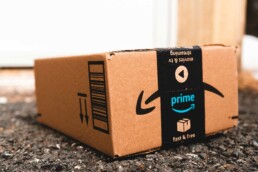
How Does Selling With Amazon FBA Work?
Amazon’s FBA program works very similarly to normal fulfillment processes and the services you’d find when working with a third-party logistics provider (3PL). However, when partnering with the world’s leading e-commerce giant, there are definitely a few catches.
First, let’s take a look at the steps involved when selling with Amazon FBA.
- Step one: Send your products to an Amazon FBA warehouse
- Step two: Amazon adds your inventory to their warehouse.
- Step three: Customers purchase your products directly from Amazon
- Step four: Amazon picks, packs, and ships out the order
- Step five: Amazon handles customer questions and concerns.
If a product is competing head-to-head with Amazon, it’s not likely the seller’s product will supersede it.
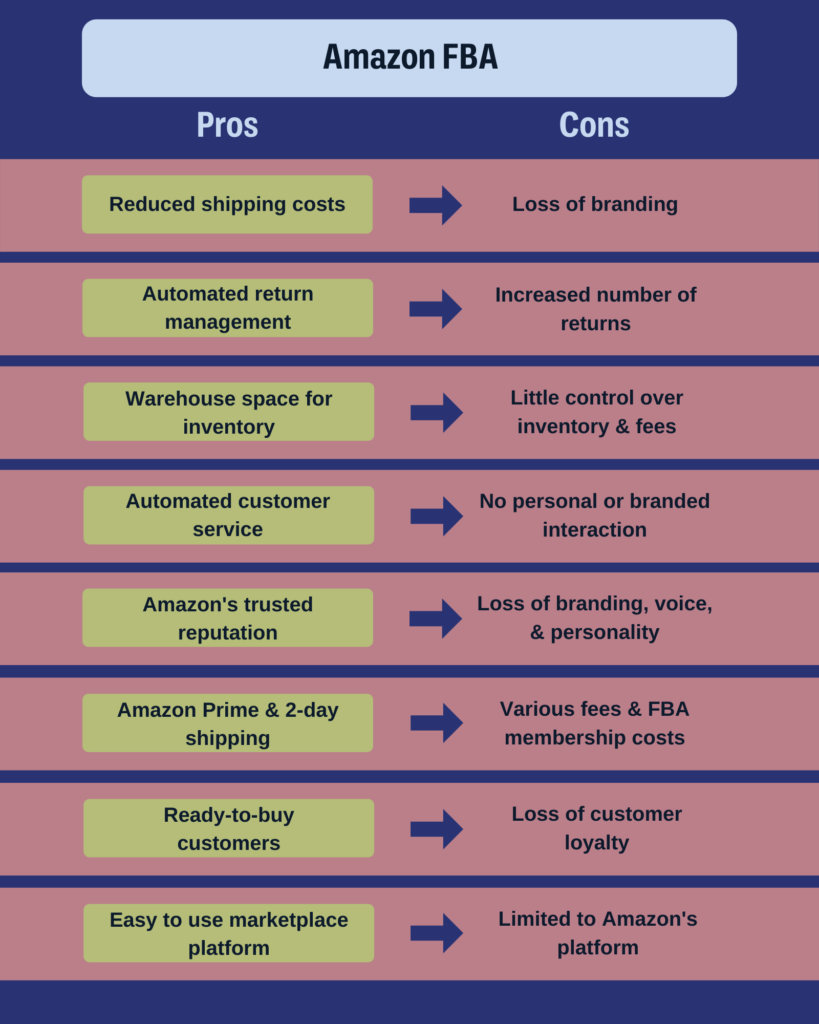
Pros of Selling with Amazon FBA
Reduced Shipping Costs
Because you’re partnering with a fulfillment giant who owns their own fleet of delivery trucks, planes, and even drones – it only makes sense that Amazon would want you to transition to their carriers over domestic options. Even though it comes across as cheaper for you, Amazon is still making a profit on shipping costs.
By utilizing Amazon’s branded shipping carriers through their FBA program, you can find reduced shipping costs for your own e-commerce business in comparison to in-house fulfillment shipping costs.
Return Management
When utilizing their customer service option, Amazon lets you transfer the stress of return management to their shoulders.
Customer service teams will communicate with buyers and provide a hassle-free return experience with little to no help from sellers.
Warehouse Space
Transferring your fulfillment process to Amazon provides e-commerce businesses access to virtually endless storage space – with a price of course. Because Amazon owns and operates multiple distribution centers around the world, benefiting from a surplus of inventory space and speedy delivery times may seal the deal for you when considering Amazon FBA.
Customer Service
Another huge aspect of Amazon’s FBA program is utilizing its customer service platform. Most businesses spend 11% of their annual revenue on their customer service sector. By partnering with Amazon, some e-commerce can reduce the need for customer service platforms, equipment, and in-house agents.
Reputation
As a start-up, it’s difficult to establish a solid reputation. That’s why many e-commerce businesses are partnering with Amazon to leverage and align with their reputation for speed, quality, and convenience.
By associating Amazon’s reputation with your own products, customers are more likely to purchase from little-known sellers when their order is backed by Amazon’s quality guarantee. This streamlines the process for first-time sellers to get products in the hands of shoppers.
Ready-to-Buy Customers
One of the many reasons to start fulfilling with Amazon is the access to millions of ready-to-buy customers. Instead of catching shoppers at the right time with the right promotion and with the right item, your product will be displayed in front of thousands of consumers actively searching to buy that specific item.
Amazon Prime
After Amazon unveiled its Prime membership and 2-day shipping to customers around the world, a new standard was born. The expectation for “Prime” delivery times is now the standard in the e-commerce marketplace.
Getting orders out to customers at such speeds can be difficult for some e-commerce brands. That’s why when you join Amazon’s FBA program, you automatically join the Prime Club and are eligible to offer fast and free 2-day shipping for your buyers.
Cons of Selling with Amazon FBA
The Size of Amazon
With over 9.5 million sellers and 150 million users, it’s no secret that Amazon dominates the online industry.
When considering a partnership with this e-commerce giant, it’s important to note how saturated their seller market is. In 2019, Amazon reported that small and medium-sized businesses sold 4,000 items every minute.
That’s a lot of competition to stand out from.
Amazon Makes the Rules
Amazon has the ability to collect mass amounts of data from its customers, regardless of if they’re purchasing from you or not. With data that is only partially shared with sellers, Amazon has the huge advantage of targeting popular products, winning the Buy Box, and even lowering prices to beat popular bargains.
Common Returns
Although Amazon makes return management easier, they also make it easier for your customers. Partly due to Amazon’s no-questions-asked return policy and generic shipping procedures, your e-commerce will more than likely see a rise in returns after joining Amazon’s FBA program.
Loss of Branding
When you choose to partner with Amazon, you forfeit your right to create a branded shopping experience for your customers. Instead, buyers will see Amazon’s logo on each generic box sent to them.
Additionally, sellers lose the ability to provide personable communication with shoppers and build their buying experience. Instead, shoppers are met with automated Amazon communications and help-desk agents.
40% of consumers said they would consider a repeat-purchase if their order came in gift-like packaging.
Customer Loyalty
As an FBA seller you will have access to millions of shoppers, many of which who are actively looking to buy the products you’re selling. However, even if customers enjoy your product and want to support it, they will ultimately remain loyal to Amazon and its marketplace platform.
Limited Control
One of the biggest cons of partnering with Amazon is how little control you have over your customer’s shopping experience. When selling on Amazon’s platform, Amazon focuses on the product – not the brand.
This will limit you from having any presence on the platform or differentiating yourself from competitors. Customers cannot be redirected to branded websites, see personalized ads, or be given the opportunity to explore other products you might offer.
Saturated Market
It’s no secret that Amazon has millions of active shoppers browsing their marketplace in search of the perfect product. By contrast, Amazon is also home to millions of sellers – including itself.
That’s why when you enter Amazon’s marketplace as a competitor, you are essentially competing against millions of other people, and the biggest e-commerce giant in the world – making it a bit challenging to grow your audience or increase sales profits.
Partnering with Falcon Instead
Even though Amazon dominates roughly 50% of the e-commerce market, it doesn’t mean they are perfect. Where Amazon falls short for its customers, Falcon makes up for it. When choosing Falcon you get a variety of perks you simply won’t find when partnering with big-name companies like Amazon.
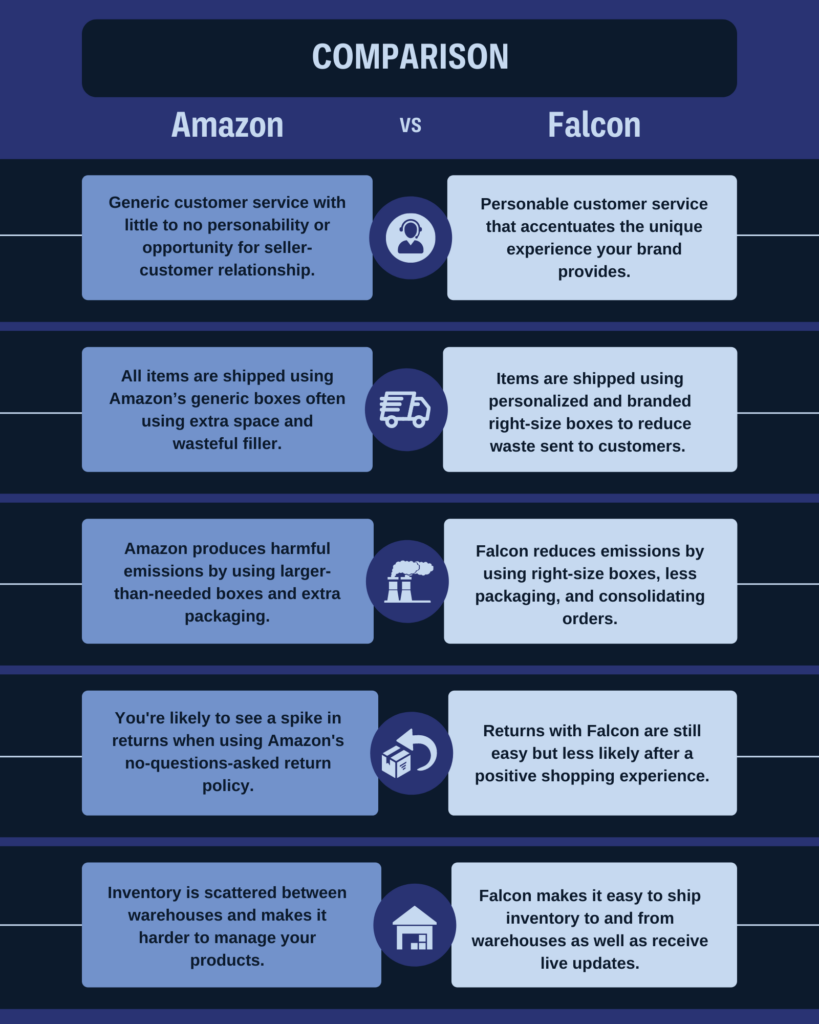
Personable Customer Service
A huge difference between Falcon Fulfillment and working with Amazon is when your customers call in or a client needs attention, you don’t get automation or pinged to the next available agent out of thousands. With Falcon, you’re met with personable service every time.
Whether a customer or partner, communication is valued if not prioritized amongst the Falcon team.
Customer Experience
One of the number one disadvantages of partnering with Amazon is how limited your brand reaches. Regardless of how cool your product is or how custom the packaging is, it’s going to be put into a generic Amazon box for shipping.
With Falcon, you still get the generic box – BUT, it’s customizable to you and your brand. Whether it’s branded tape, logos, inserts, filler – whatever it is, Falcon is sure to create a memorable experience for your shoppers and improve customer experience through and through.
2 and Same-day Shipping
When you choose Falcon, you don’t have to worry about losing the Prime advantage. You’ll still be able to provide 2-day shipping to your customers 7 days a week.
Bonus, if customers place an order before 2PM on weekdays, their order is processed that day.
Less Waste and Emissions
Not only are you still getting the Prime advantage without the ugly logo, but you’re producing less waste and emissions because of it. Falcon works hard to decrease vehicle emissions when possible and limits product waste by reducing needless filler, bundling items, and helping clients transition to greener fulfillment methods.
Return Management
Similar to Amazon, Falcon offers return management that makes it not only hassle-free for your customers, but seamless and stress-free for you. When joining Amazon’s FBA program, you’re likely to see a rise in returns thanks to shipping damages, open-policy returns, and limited customer communication.
With Falcon, since you keep control over your customer experience, you’re likely to see fewer returns and more repeat buyers.
Controlled Inventory Space
Don’t worry about which distribution center your inventory is at and what’s going on with it. When using the inventory space provided by Falcon, your products are on-site and under good care by Falcon personnel.
With full transparency and an automated inventory management system, you’ll know the details of your inventory at any time, anywhere.
Beginner’s Guide to Third-Party Logistics (3PL)
The world of e-commerce is always changing, therefore understanding the roll of Third-Party Logistics is integral to keeping up. In light of this our beginner’s guide to third-party logistics (3PL) will delve into the essential aspects, offering insights into fulfillment services, warehousing, and much more.
Read More…
Fulfill with Falcon
While selling with Amazon FBA and similar programs might be right for some e-commerce businesses, for others, the benefits are too small in hindsight of the disadvantages we’ve talked about today.
When considering utilizing business services for your e-commerce company, consider Falcon. Because where others fall short, Falcon soars.
Let’s Talk!
5 International Shipping Key Points for E-commerce Success
5 International Shipping Key Points for E-commerce Success
Expanding an e-commerce business globally can be a game-changer, but it comes with its own set of challenges. This blog post explores the 5 international shipping key points to consider for a smooth and successful global e-commerce operation.
Customs Regulations and Documentation to Consider When Shipping Internationally

One of the most crucial international shipping key points is navigating customs regulations and documentation. Each country has its own set of rules and requirements for importing goods, and failing to comply can lead to delays, additional costs, and even legal issues. To avoid these pitfalls, it’s essential to research and understand the customs regulations of the countries you plan to ship to.
Partnering with a third-party logistics (3PL) provider that offers customs brokerage services can be a lifesaver. They can help properly classify products, prepare the necessary documentation, and ensure compliance with international shipping regulations. By leveraging their expertise, businesses can minimize the risk of customs delays and focus on growth.
Shipping and Delivery Options

Another key point to consider when shipping internationally is choosing the right shipping and delivery options. With a wide range of carriers, services, and rates available, it can be overwhelming to determine the best approach for an e-commerce business. Factors such as shipping speed, cost, reliability, and tracking capabilities all come into play.
To optimize an international shipping strategy, consider partnering with a 3PL that offers fulfillment services and has established relationships with multiple carriers. They can help negotiate competitive freight rates, consolidate shipments, and select the most appropriate shipping methods for products and target markets. By leveraging their expertise in transportation management systems (TMS) and logistics, businesses can ensure efficient and cost-effective international shipping.
Inventory Management and Warehousing

Effective inventory management and warehousing are critical components of a successful international shipping strategy. As an e-commerce business expands globally, factors such as inventory levels, storage locations, and distribution channels must be considered. Poor inventory management can lead to stockouts, overstocking, and increased fulfillment costs.
Partnering with a 3PL that offers warehousing and distribution services can help optimize inventory management for international shipping. They can provide scalable fulfillment solutions, such as distributed inventory storage, cross-docking, and multi-channel fulfillment. By leveraging their network of fulfillment centers and advanced inventory tracking software, businesses can ensure that products are stored and distributed efficiently, reducing shipping times and costs.
Returns and Reverse Logistics

Another international shipping key point to consider is how to handle returns and reverse logistics. Customer expectations for easy and hassle-free returns are high, and a poor returns experience can damage a brand’s reputation and customer loyalty. When shipping internationally, returns can be even more complex and costly due to customs regulations, shipping fees, and longer transit times.
To streamline the international returns process, first consider implementing a return merchandise authorization (RMA) system. Additionally, partnering with a 3PL that offers reverse logistics services can be highly beneficial. They can help develop a customer-friendly returns policy, efficiently handle the physical processing of returns, and provide valuable insights into return patterns. Furthermore, by outsourcing returns management to a 3PL, businesses can significantly reduce costs, greatly improve efficiency, and ultimately enhance the customer experience.
Scalability and Flexibility

Finally, scalability and flexibility are crucial international shipping key points to consider as an e-commerce business grows. As a business expands into new markets and faces fluctuating demand, shipping and fulfillment operations need to be able to adapt quickly. Rigid and inflexible systems can hinder the ability to capitalize on new opportunities and meet customer expectations.
Partnering with a 3PL that offers scalable fulfillment solutions and flexible order fulfillment services can help navigate the challenges of international shipping. They can provide a range of value-added services (VAS), such as kitting and assembly, product customization, and packaging optimization, to help adapt to changing market demands.
By leveraging their technology solutions, such as cloud-based warehouse management systems (WMS) and real-time order tracking, businesses can ensure that international shipping operations remain agile and responsive.
Shipping internationally is a complex and multifaceted endeavor, but by focusing on these 5 international shipping key points, e-commerce businesses can set themselves up for global success. From navigating customs regulations and optimizing shipping options to streamlining inventory management and returns, each aspect plays a crucial role in ensuring a smooth and efficient international shipping operation.
Beginner’s Guide to Third-Party Logistics (3PL)
The world of e-commerce is always changing, therefore understanding the roll of Third-Party Logistics is integral to keeping up. In light of this our beginner’s guide to third-party logistics (3PL) will delve into the essential aspects, offering insights into fulfillment services, warehousing, and much more.
Read More…
Partnering with a reputable 3PL provider can undoubtedly be a game-changer in overcoming the challenges of international shipping. By leveraging their expertise, technology, and global network, businesses can effectively optimize their supply chain, significantly reduce costs, and greatly improve the customer experience. Moreover, with the right strategies and partnerships in place, e-commerce businesses can confidently expand into new markets and ultimately achieve international success.
If you have questions about shipping internationally reach out to our team at Falcon Fulfillment!
Let’s Talk!
Retail E-commerce Spending Growth in 2024
Exploring Retail E-commerce Spending Growth: Trends and Forecasts 2024
Retail e-commerce spending has continued its upward trajectory into the first third of 2024. Additionally, this article delves into the latest trends, insights, and forecasts shaping this growth phenomenon.
Retail E-commerce Spending Growth: An Overview
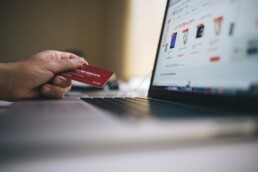
According to Adobe Analytics, U.S. retail e-commerce spending is poised to exceed $500 billion in the initial half of 2024, marking a substantial year-over-year increase of at least 6.8%. This growth trajectory underscores the resilience of the digital economy amidst economic uncertainties.
Key Categories Driving Growth
Electronics, apparel, and groceries emerge as the primary drivers of retail e-commerce spending, exhibiting notable year-over-year expansions. Consumers directed $61.8 billion towards electronics, $54.5 billion towards apparel, and $38.8 billion towards groceries during the period from January to April 2024.
The cosmetics category also experienced a significant uptick, witnessing an 8% increase year over year, with sales amounting to $13.2 billion. This trend signifies evolving consumer preferences and the expanding digital footprint of traditionally brick-and-mortar sectors.
Consumer Behavior Amidst Inflation

In response to inflationary pressures, consumers display discerning purchasing behaviors, gravitating towards lower-priced goods across various categories. Categories such as personal care, electronics, and apparel witnessed substantial increases in the share of cheapest products, reflecting consumers’ emphasis on value and budget-conscious shopping.
Emerging Trends: BNPL and Mobile Commerce
To navigate economic uncertainties and manage budgets effectively, consumers increasingly embrace Buy Now, Pay Later (BNPL) options. BNPL usage surged to $25.9 billion through April 2024, indicating a growing preference for flexible payment solutions.
Moreover, mobile commerce continues its ascendancy, with $156.9 billion in online sales recorded in the first four months of 2024. Adobe projects mobile sales to capture a significant share of holiday spending, signaling a continued shift towards mobile-first shopping experiences.
Marketing Channels and Revenue Attribution

Paid search emerges as the dominant marketing channel, driving a substantial portion of retail e-commerce spending. Direct web visits, affiliates/partnerships, and organic search also contribute significantly to online revenue generation. While social media’s direct contribution to sales remains modest, its year-over-year growth underscores its evolving role in shaping consumer purchasing journeys.
Beginner’s Guide to Third-Party Logistics (3PL)
The world of e-commerce is always changing, therefore understanding the roll of Third-Party Logistics is integral to keeping up. In light of this our beginner’s guide to third-party logistics (3PL) will delve into the essential aspects, offering insights into fulfillment services, warehousing, and much more.
Read More…
As retail e-commerce spending surges in the first third of 2024, businesses must adapt to evolving consumer preferences, inflationary pressures, and digital commerce trends. Consequently, by leveraging data-driven insights and embracing innovative strategies, retailers can capitalize on the opportunities presented by the burgeoning digital economy.
For comprehensive solutions in fulfillment services, inventory management, and order fulfillment, consider reaching out to Falcon Fulfillment today. By doing so, you can stay ahead of the curve with our scalable e-commerce solutions tailored specifically to your business needs.
Let’s Talk!
Inflation and E-commerce
What is E-commerce Inflation?
Despite the fact that inflation has not been significant for e-commerce throughout its history, everything changed at the start of the pandemic in 2020. Since then, inflation, shortages, and supplies have only become worse, impacting most e-commerce businesses around the world.
According to the July 2021 Report by Adobe Digital Economy Index, online prices have increased 3.1% YoY.
“In January and February 2022, these higher costs drove $3.8 billion in online sales growth. That same rate of inflation could lead consumers to spend nearly $27 billion more in 2022 on the same amount of purchases.”
Retail Dive
To some degree, the rate of e-commerce inflation has matched the general rate of economic inflation, which was recorded at 8.5% in April 2022.
“Consumers and e-commerce alike should anticipate inflation to linger around 4-5% over the next three years.”
Bloomberg

How is Inflation Affecting E-commerce?
While e-commerce is experiencing an all-time high in sales growth, inflation is not linear. It ripples through the economy in various ways, affecting nearly every e-commerce differently. Inflation’s impact on small to medium-sized businesses may seem negligible now, but it can quickly add up with ongoing obstacles in the supply chain.
When manufacturers are unable to retrieve the raw materials required to produce products, they suffer. Additionally, inflation increases the price of other commodities such as electricity, internet, online advertising, and computer upkeep. From reduced inventory and missing items to increased costs and longer delays, inflation is affecting businesses around the world.
Raising prices makes sense for most businesses combatting the effects of inflation. However, charging more could cause additional chain reactions. Because inflation reduces the number of products consumers can afford, we predict a heavy impact on e-commerce, especially those selling non-essential or luxury items. When consumers restrict their spending habits, businesses naturally lose profitability.
Covid and the Supply Chain
The increased demand for products rather than services reflects the significant shift in consumer behavior since the pandemic. This unanticipated demand, combined with the effects of Covid-19, had a significant impact on the already stressed supply chain.
“The shipping delays and port bottlenecks of late 2021 left businesses with insufficient supply. At the same time, Americans unleashed pent-up demand throughout last year and pushed spending above the pre-pandemic trend.”
Business Insider
What Can E-commerce Do?
Although the supply chain is slowly recovering, what can you do to combat growing prices, reduced inventory, and future shortages?
Update Product Offering
Is your product model reflecting the current market inflation? If it doesn’t, try to eliminate underperforming SKUs, introduce private label brands, and combine items to boost the value or lower product amounts. For example, instead of a 10-ounce portion, provide an 8-ounce.
Increase Productivity
Increasing productivity may be an alternative to raising prices. Some examples of how to increase productivity are; the use of automation, marketing optimization, recruiting personnel, or utilizing a third-party fulfillment service to find you the best avenues to navigate inflation and fulfillment.
Keep a Safety Stock
Extended lead times, increased prices, and the unpredictability of the supply chain, has made maintaining healthy inventory levels more important than ever. If your position allows, we recommend keeping up to six months’ worth of safety stock on hand. This may help e-commerce capitalize on additional market share during future times of inflation, delays, or shortages. For businesses that are forced to overlook this strategy, partnering with a 3PL could be the answer to reliable safety stock and affordable warehousing.
Switch Suppliers
Working with a manufacturer that can build and ship your items locally can save on high sea freight shipping costs. Most sellers find the efficiency and cost of manufacturing in China to be appealing; however, spending more on local production may prove to be a justifiable tradeoff when avoiding high and continuously climbing sea freight costs. Transitioning to a domestic supplier allows you to minimize supply chain complications and provide home-grown products to consumers.
Beginner’s Guide to Third-Party Logistics (3PL)
The world of e-commerce is always changing, therefore understanding the roll of Third-Party Logistics is integral to keeping up. In light of this our beginner’s guide to third-party logistics (3PL) will delve into the essential aspects, offering insights into fulfillment services, warehousing, and much more.
Read More…
Despite best efforts, e-commerce companies may still have to raise prices due to inflation. However, leveraging these tips could help your e-commerce business keep costs lower, which will maximize your competitive advantage.
Follow along for more as we navigate the fulfillment world and bring you insider news on the supply chain, e-commerce inflation, and more.
Let’s Talk!
